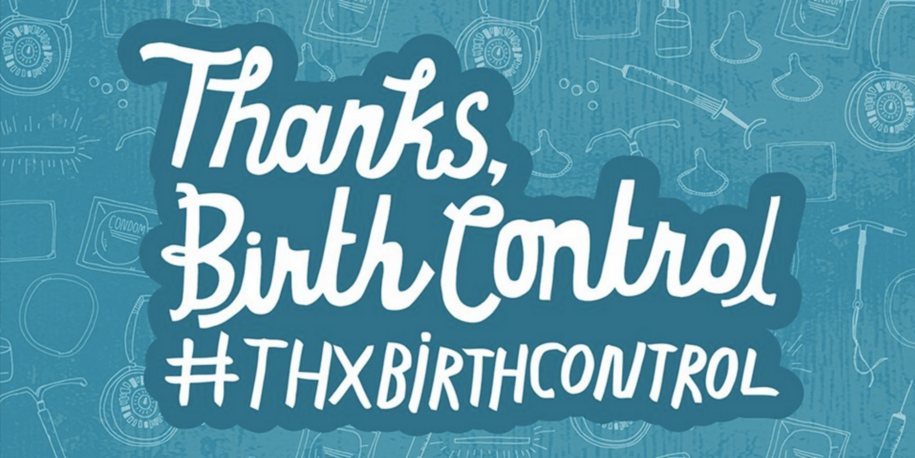Contraception refers to the prevention of pregnancy. There are several methods to do so.
Contraception disrupts pregnancy in one of three broad ways:
- Barrier Method
- Birth Control
- Intrauterine Devise
- Natural Family Planning
- Permanent Family Planning
1. BARRIER METHOD
In this type of contraception, the objective is to prevent the sperm and the egg from meeting inside the woman’s body. Quite like the vigilante aunt in desi soap operas!
Some disadvantages of this method are: the possibility of the condom, diaphragm or cup getting damaged or displaced during sex, allergic reaction to latex, and the disruptive nature of having to remember to use a barrier before intercourse.
However, these can easily be remedied by using good-quality products from trusted brands. Similarly, changing to products made out of poly-isoproprene or polyurethane may help those sensitive to rubber, and the act of wearing the product can be incorporated into the foreplay.
Male Condom
One of the most widely used and easily accessible forms of contraception – the male condom, is a thin, latex (rubber) sheath, designed to be worn on the erect penis before penetrative sex. Ejaculated semen is collected within the condom, and should be carefully disposed of, after the act. It is more than 99% effective in preventing pregnancy.
Condoms, both male and female, are the only contraceptive method that has the supremely added benefit of preventing STDs (sexually transmitted diseases). Condoms are single-use only, so a fresh packet should be opened whenever needed.

Female Condom
These are about 95% effective in preventing pregnancy and STIs. Similar in quality to the male one, the female condom is designed to be worn inside the vagina to prevent sperm from entering the cervix. It is as imperative to ensure that the condom be put in before any contact happens between the penis, vagina and the area surrounding it, as it is to ensure that the penis does not slip between the condom and the vaginal wall, or push it too far inside, all of which will render it ineffective. This has the added disadvantage of not being as easily available, and thus is pricier than male condoms.
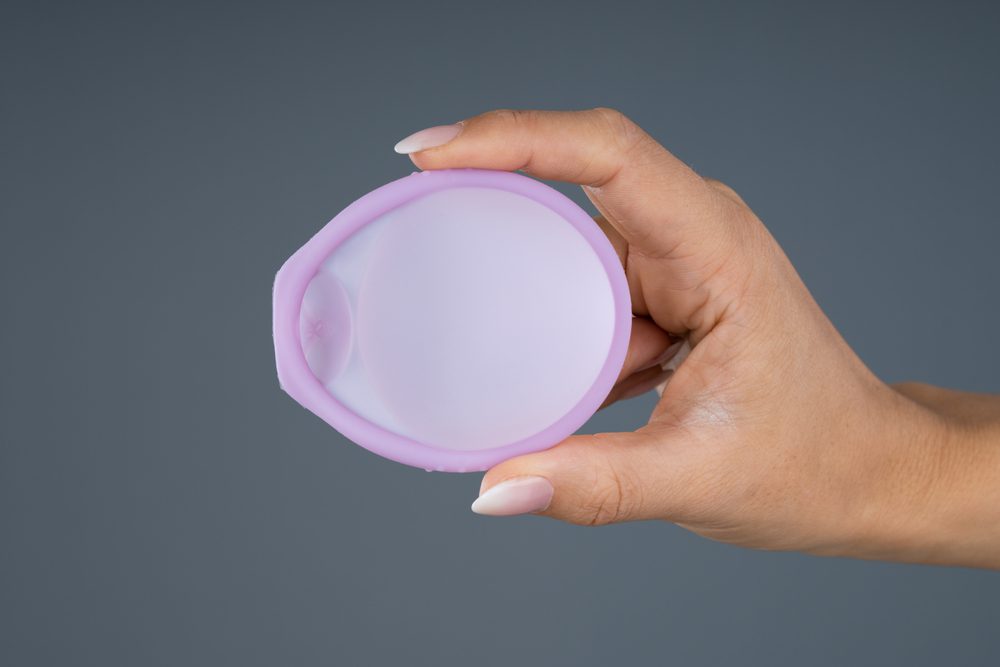
Cup and Diaphragm
These are about 92 – 96% effective. The cup and the diaphragm are thin silicon or latex covers that can be inserted into the vagina to block the mouth of the cervix to prevent the entry of semen during sex. It needs to be used in conjunction with spermicide to be effective. They are reusable for up to a year, as long as they are undamaged.
Some disadvantages include:
- Needs copious amounts of spermicide to work
- Allergic reaction to spermicide
- Inserting something deep inside may be uncomfortable to some, as it is necessary to ensure that the cervix is fully covered
- May cause urinary tract (UTI) or vaginal infections
- Ineffective if removed too soon, as in needs to be in place for the long duration of at least 6 hours after sex
- Ineffective if kept in for too long (more than 3 hours) without the reapplication of spermicide
- May need professional help to learn its proper usage
- May not work if the cervix is positioned differently
- A new one may be needed for a good fit after childbirth
2. BIRTH CONTROL
This is a contraceptive method that works by using artificially synthesized female hormones – progesterone and /or estrogen, to control the menstrual cycle and prevent pregnancy. The end result of this method is too thicken cervical mucus a great deal to make it difficult for sperms to swim through into the uterus to meet the egg, thin out the lining of the uterus to disallow the implantation of any chance fertilization of eggs, and sometimes, prevent ovulation altogether. This hormone control method is more than 99% effective in preventing pregnancy ONLY if followed as instructed.
Contraceptives may help regulate periods for women who experience frequent and heavy periods. In the case of oral contraceptives (pills), vomiting or excessive diarrhea might reduce the dosage of hormones on the day in question, and additional protection should be used, if necessary.
There are some side effects like breast tenderness, mood swings, and nausea and vomiting, that usually resolves in a couple of months. Furthermore, the possibility of developing blood clots and related health conditions, and breast or ovarian cancer also slightly spikes up.
There seems to be an increased tendency to gain weight and develop depression, but these claims have not yet been substantiated with enough scientific evidence and research.
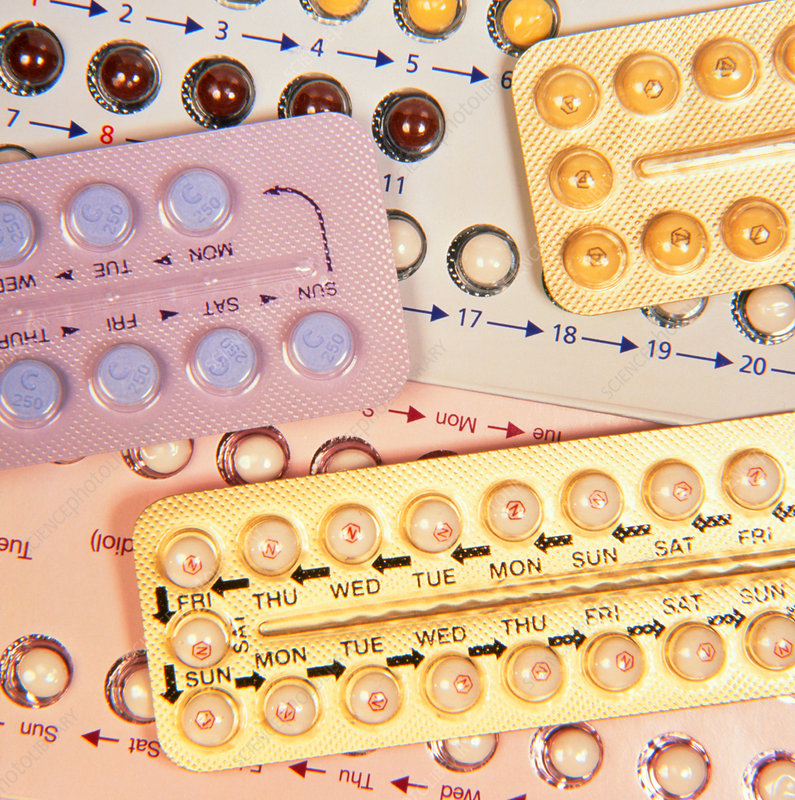
Combined Pill
“The Pill,” as it is most commonly called, contains both the female hormones estrogen and progesterone in specific amounts. It should be taken around the same time everyday, for it to be effective.
Progesterone-only-pill (POP)
Similar to the combined pill in usage, POP contains only the hormone progesterone.
Patch
A small patch that releases a measured amount of hormone into the body via the skin. One patch lasts about three weeks.

Vaginal Ring
A small ring that is placed inside the vagina. It works by continually releasing the hormones estrogen and progesterone into the body. It needs replacement, once every month.
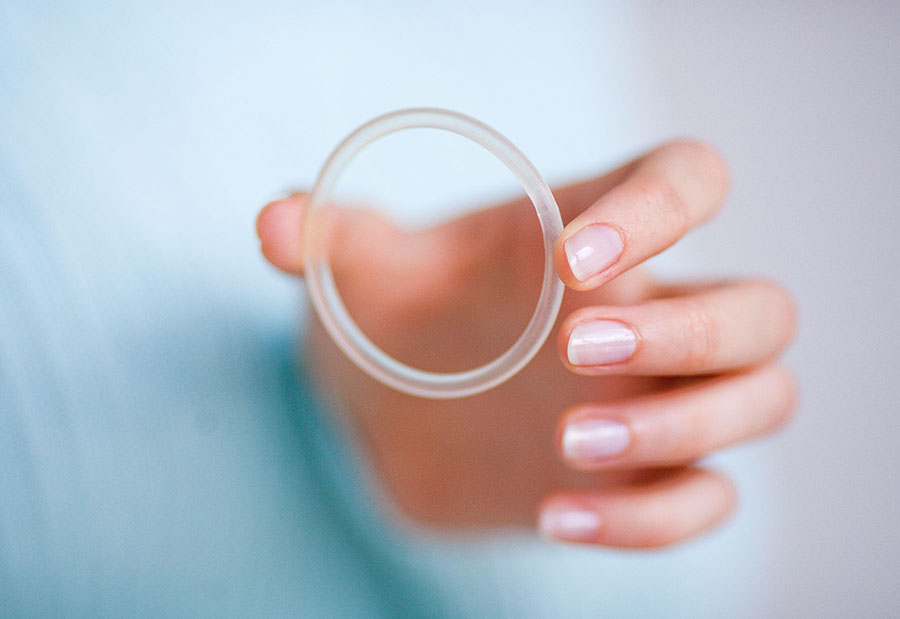
Implant
A tiny, flexible rod that is placed just under the skin of the upper arm to continually release progesterone into the blood stream. One implant lasts for three years.
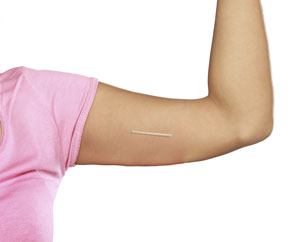
Injection
A contraceptive injection that releases progesterone into the body to prevent pregnancy. Injections need to be administered once 8 to 13 weeks, depending on the type of injection used.
Intra Uterine System (IUS)
A small, plastic T-shaped insert placed inside the uterus to release progesterone. It works for 3 – 5 years, depending on the brand used.
3. INTRAUTERINE DEVICE
IUD refers to a small copper insert placed inside the uterus that releases micro measures of copper into the uterus to prevent pregnancy. It is often referred to as the “Copper T” or “copper coil.” It lasts for 5 – 10 years. It is more than 99% effective. However, periods may be heavier, longer and more painful for the first few months. Also, there may be an increased possibility of contracting vaginal and bladder infections with this kind of contraception.
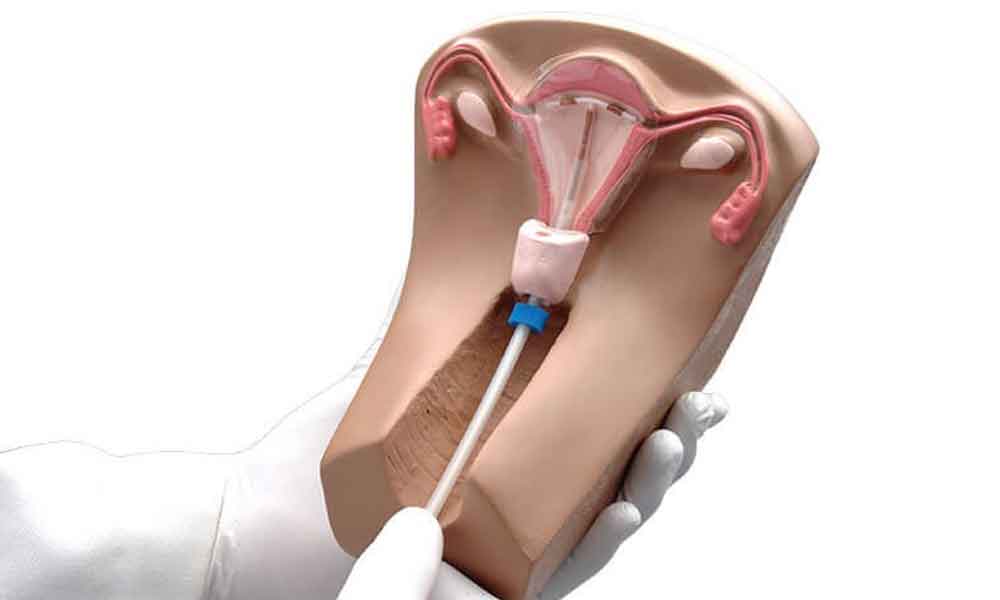
4. NATURAL FAMILY PLANNING
This involves being hyperaware of one’s body systems, particularly the duration and frequency of the menstrual cycle. This method usually takes a lot of practice, patience and perseverance to learn and implement, so it may be necessary to use additional contraception while this one is being mastered.

Fertility Window
This is the rhythm or calendar method which involves being aware of the day of ovulation, and completely abstaining, or using a very reliable contraceptive method during the period increased fertiltiy, that is, the five days prior to ovulation, day of, and the day following it. If the menstrual cycle is irregular, up to fifteen days in every cycle, may need to be considered as “risky” days.
Lacto-Amenorrhea Method (LAM)
In most women, exclusive and frequent (once every 2 – 3 hours) breastfeeding in the first six months (before starting solids, and dropping feeds) following childbirth can naturally prevent pregnancy, due to the high levels of the hormone prolactin in the blood.

Coitus Interruptus
Also known as the withdrawal or pullout method, this is an age-old, traditional type of contraception that involves the complete removal of the penis, out and away from the vagina, before ejaculation. It is not the most reliable type of family planning as sperm can also be present in the pre-ejaculate – the discharge from the penis during the act of sex/foreplay, but before complete ejaculation. Additionally, in this method, avoiding pregnancy is completely at the mercy and discernment of the man, and his capability to withhold ejaculation until appropriate.
5. PERMANENT FAMILY PLANNING
This involves surgical intervention to permanently resolve the issue of possible pregnancy. It is extremely difficult to reverse these procedures, so absolute certainty is required if this method is to be employed. It is extremely effective, does not meddle with natural hormone levels and the libido (sex drive).
They do have minimal side effects such as the pain and discomfort after the surgery, and surgical complications such as infection.
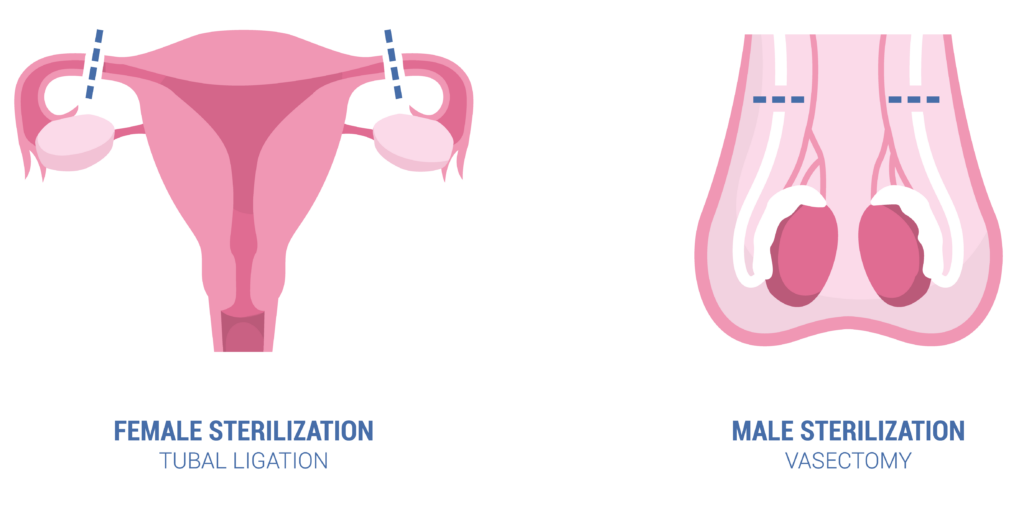
Laparoscopic Tubal Ligation (LRT)
Female sterilization is a procedure whereby the fallopian tubes are sealed, blocked, clamped or severed, to prevent eggs from travelling into the uterus. There is the very rare possibility of the tubes naturally rejoining, in which case, a pregnancy may result in an ectopic one (implantation of the fertilized ovum in the fallopian tube).
Vasectomy
Male sterilization involves the sealing or severing of the vas deferens – the tubes that carry sperm from the testicles. It is a simple outpatient procedure that requires a small local anesthetic.
CONCLUSION
Every contraceptive method has it pros and cons. Choosing the one that is best suited to the individual body and requirements is very important. If however, a failure in the contraceptive method used is suspected at any time, and unprotected sex may have been indulged in, then, as a final resort, emergency contraception like the iPill, or the “morning-after pill,” should be used to avoid an unwanted and unnecessary pregnancy.
